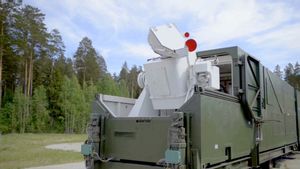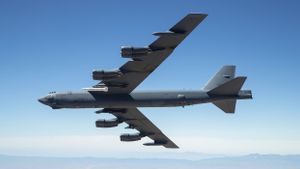
JAKARTA - The White House is trying to put advanced anti-ship missiles in the hands of Ukrainian fighters to defeat Russia's naval blockade, but not more powerful weapons that could sink Russian warships that could escalate the conflict, officials said.
Ukraine has made no secret of wanting more advanced US capabilities beyond its current inventory of artillery, Javelin and Stinger missiles, to other weapons.
The Kyiv list, for example, includes missiles that could push the Russian Navy away from its Black Sea ports, enabling the resumption of worldwide shipments of grain and other agricultural products.
Current US officials, former officials and congressional sources have cited obstacles to sending more powerful long-range weapons to Ukraine, including lengthy training requirements, difficulty maintaining equipment, or fears of US weapons falling to Russian forces, in addition to fears of escalation.
However, three US officials and two congressional sources said two types of powerful anti-ship missiles, Boeing's Harpoon, Kongsberg's Naval Strike Missile and Raytheon Technologies' are under active consideration either for direct delivery to Ukraine, or via transfer from European allies that possess the missiles.
In April, Ukrainian President Volodymyr Zelensky appealed to Portugal to provide the Ukrainian military with the Harpoon, which has a range of up to nearly 300 km.
However, there are several problems that prevent Ukraine from receiving the missiles. First, the limited availability of platforms for launching Harpoons from the coast, a technically challenging solution according to some officials, as most of them are sea-based missiles.

Two US officials said the United States was working on a potential solution that included pulling the launcher off the US ship. The two missiles cost about $1.5 million per round, according to experts and industry executives.
About 20 Russian Navy ships, including submarines, are in the Black Sea operational zone, the British defense ministry said.
Separately, Bryan Clark, a naval expert at the Hudson Institute, said 12 to 24 anti-ship missiles like the Harpoon with a range of more than 100 km would be enough to threaten Russian ships and could convince Moscow to lift the blockade.
"If Putin stays put, Ukraine could take Russia's biggest ship, because they have nowhere to hide in the Black Sea," Clark said.
Russia has suffered losses at sea, most notably the sinking of the cruiser Moskva, the main ship of its Black Sea fleet.
Few countries would be willing to send Harpoons to Ukraine, US officials and congressional sources said. But no one wants to be the first or only country to do so, fearing retaliation from Russia if a ship is sunk with a Harpoon from its stockpile, a third US official said.
The US official said one country was considering being the first to supply missiles to Ukraine. Once the "fully equipped" nation commits to sending the Harpoon, other countries may follow suit, the official said.
Meanwhile, the Naval Strike Missile (NSM) can be launched from the coast of Ukraine and has a range of 250 km. It also takes less than 14 training days to operate.
The source said the NSM was seen as less logistically difficult than the Harpoon, as NATO allies could lend available mobile ground launchers and warheads from Norway.
The first two US officials and congressional sources said the United States was trying to find a way for Ukraine to procure NSMs and launchers from European allies.
Congressional sources said another option was for Norway to donate NSM to Ukraine, an idea supported by Norwegian lawmakers. The Norwegian Ministry of Defense declined to comment on what additional contributions of weapons and defense equipment it might consider offering to Ukraine.
To note, all requests for weapons that have US content such as the Harpoon and NSM must be approved by the US State Department, which draws guidance from the White House.
SEE ALSO:
Another weapon high on Ukraine's shopping list is Multiple Rocket Launch Systems (MLRS) such as the M270 made by Lockheed Martin, which can strike targets 70 kilometers or more away, a threefold increase over many of their current howitzers. round.
In recent weeks, the Biden administration has instead decided to send the M777 tow howitzers that can be deployed more quickly and delivered in larger numbers, two US officials said.
The two US officials said the M270 or a similar system such as the M142 HIMARS would be considered for delivery to Ukraine, after Congress passed an additional $40 billion funding bill that would authorize the $11 billion Presidential Withdrawal Authority. It allows the president to allow the transfer of excess weapons from US stockpiles without congressional approval in response to an emergency.
The English, Chinese, Japanese, Arabic, and French versions are automatically generated by the AI. So there may still be inaccuracies in translating, please always see Indonesian as our main language. (system supported by DigitalSiber.id)

















